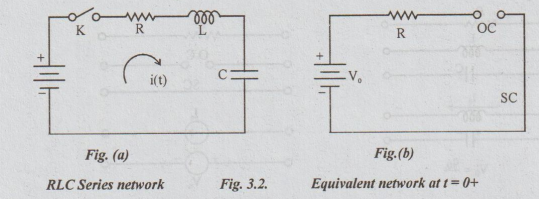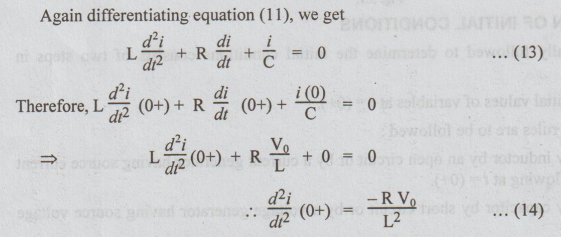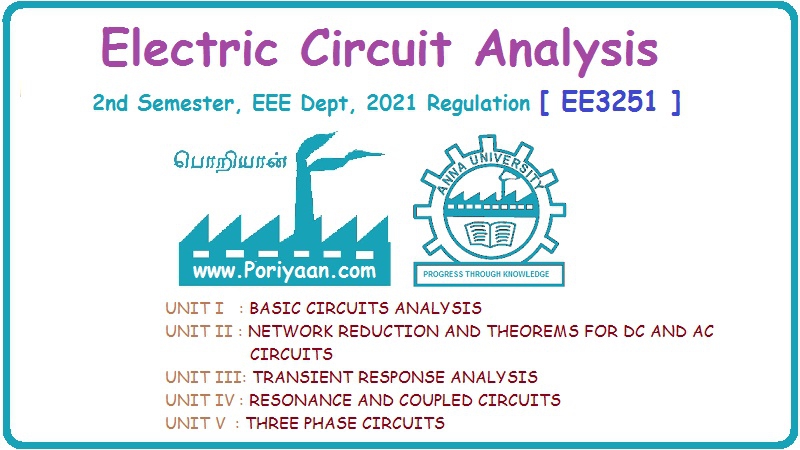Electric Circuit Analysis: Unit III: Transient Response Analysis
Determination of initial conditions
Transient Response Analysis
The procedure generally followed to determine the initial conditions consists of two steps in sequence.
DETERMINATION OF INITIAL CONDITIONS
The
procedure generally followed to determine the initial conditions consists of
two steps in sequence.
Step
1: Solving for initial values of variables at t =
(0+).
For
this, the following rules are to be followed:
(i)
Replace every inductor by an open circuit or by a current generator having
source current equal to that flowing at t = (0+).
(ii)
Replace every capacitor by short circuit or by a voltage generator having
source voltage
Vco
= q0 / C
(iii) Leave every resistor in the network
unchanged.
Step
2: Solving for the initial values of derivatives at t
= 0+.
The
details and the order of mathematical manipulation involved for the derivatives
will be different for each different case.
Consider
a series RLC network shown in fig. 3.2(a). It is connected to a DC voltage
source V0 at t = 0. Assume that no voltage has been applied to the
network before t = 0.
It
is required to find it i (0+), di / dt (0+) and d'i / dt2 (0+).
 F
F
Step
1: The equivalent network of fig.3.2 (a) is as shown
in fig. (b), at t=0+. Here inductor is shown by an open circuit and capacitor
is shown by short circuit. It is by assuming that initial current through
inductor and voltage across capacitor are equal to zero.
From
fig. (b). We see that i (0+) = 0. Applying Kirchoff's voltage law to the given
network we get,
L
di / dt + Ri + 1/C ∫ idt = V0 ... (11)
Equation
(11) holds at t = 0+. Also at t = 0+, i = 0 and 1/C ∫ idt = 0. This last term
is the voltage across the capacitor at t = 0+. Putting these values in equation
(11) at t = 0+, we get L di / dt (0+) = V0
di
/ dt (0+) dt = V0/L ... (12)

Electric Circuit Analysis: Unit III: Transient Response Analysis : Tag: : Transient Response Analysis - Determination of initial conditions
Related Topics
Related Subjects
Electric Circuit Analysis
EE3251 2nd Semester 2021 Regulation | 2nd Semester EEE Dept 2021 Regulation
